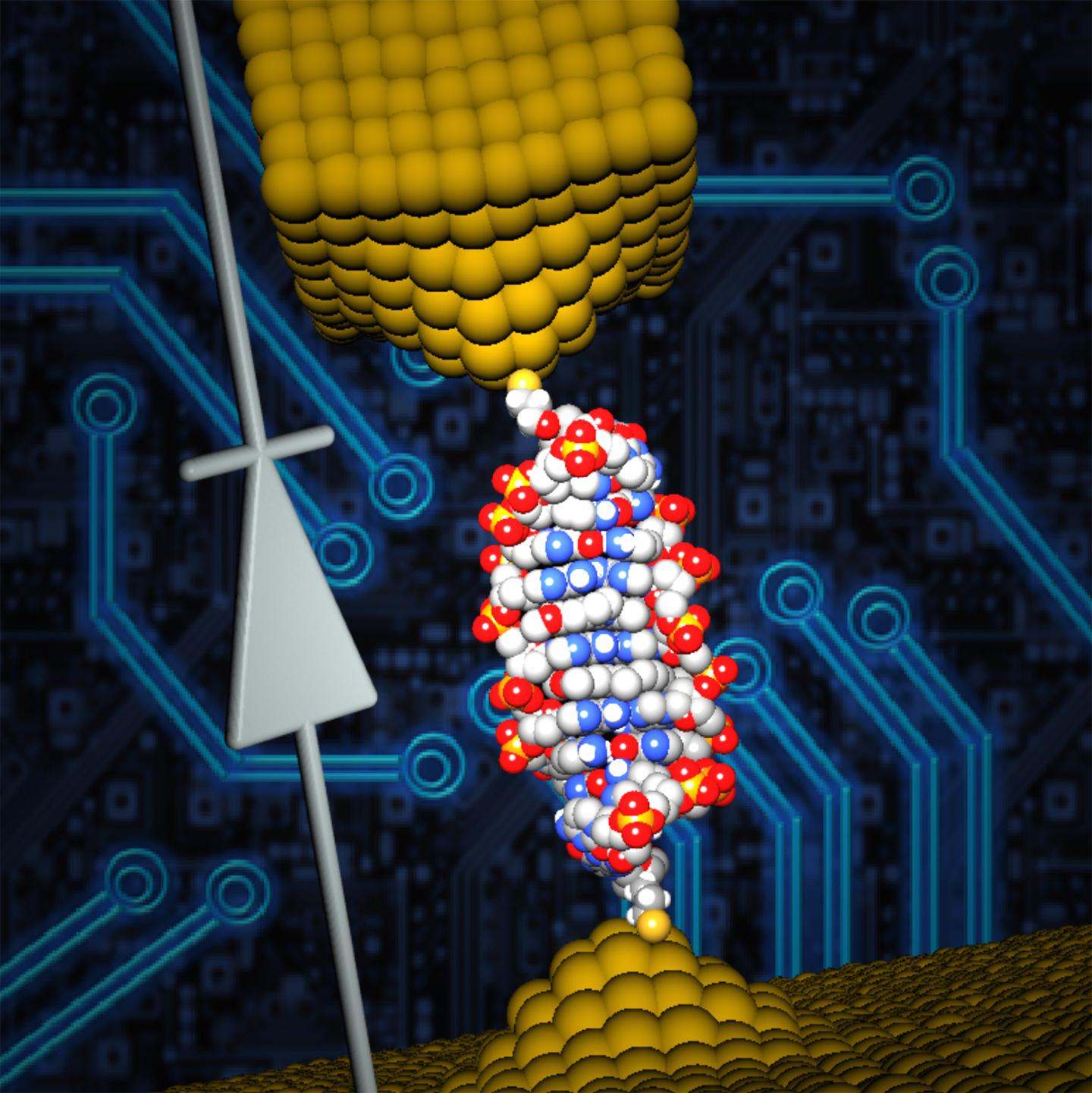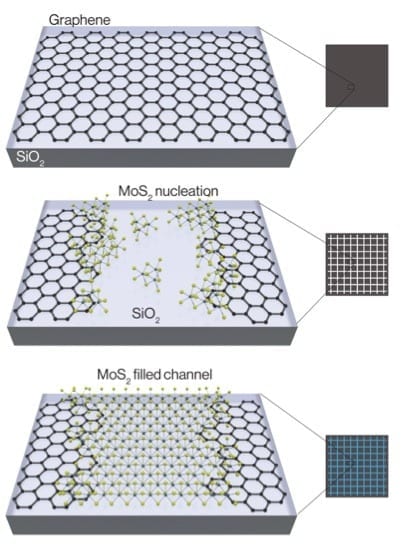
Study advances search for silicon chip replacement
Researchers at the University of Georgia and at Ben-Gurion University in Israel have demonstrated for the first time that nanoscale electronic components can be made from single DNA molecules. Their study, published in the journal Nature Chemistry, represents a promising advance in the search for a replacement for the silicon chip.
The finding may eventually lead to smaller, more powerful and more advanced electronic devices, according to the study’s lead author, Bingqian Xu.
“For 50 years, we have been able to place more and more computing power onto smaller and smaller chips, but we are now pushing the physical limits of silicon,” said Xu, an associate professor in the UGA College of Engineering and an adjunct professor in chemistry and physics. “If silicon-based chips become much smaller, their performance will become unstable and unpredictable.”
To find a solution to this challenge, Xu turned to DNA. He says DNA’s predictability, diversity and programmability make it a leading candidate for the design of functional electronic devices using single molecules.
In the Nature Chemistry paper, Xu and collaborators at Ben-Gurion University of the Negev describe using a single molecule of DNA to create the world’s smallest diode. A diode is a component vital to electronic devices that allows current to flow in one direction but prevents its flow in the other direction.
Xu and a team of graduate research assistants at UGA isolated a specifically designed single duplex DNA of 11 base pairs and connected it to an electronic circuit only a few nanometers in size. After the measured current showed no special behavior, the team site-specifically intercalated a small molecule named coralyne into the DNA. They found the current flowing through the DNA was 15 times stronger for negative voltages than for positive voltages, a necessary feature of a diode.
“This finding is quite counterintuitive because the molecular structure is still seemingly symmetrical after coralyne intercalation,” Xu said.
A theoretical model developed by Yanantan Dubi of Ben-Gurion University indicated the diode-like behavior of DNA originates from the bias voltage-induced breaking of spatial symmetry inside the DNA molecule after the coralyne is inserted.
“Our discovery can lead to progress in the design and construction of nanoscale electronic elements that are at least 1,000 times smaller than current components,” Xu said.
The research team plans to continue its work, with the goal of constructing additional molecular devices and enhancing the performance of the molecular diode.
Learn more: UGA researchers use single molecule of DNA to create world’s smallest diode
The Latest on: Nanoscale electronic components
[google_news title=”” keyword=”nanoscale electronic components” num_posts=”10″ blurb_length=”0″ show_thumb=”left”]
via Google News
The Latest on: Nanoscale electronic components
- Researchers demonstrate enhanced radiative heat transfer for nanodeviceson May 9, 2024 at 8:01 am
Researchers from Japan have been working hard to keep their cool—or at least—keep their nanodevices from overheating. By adding a tiny coating of silicon dioxide to micro-sized silicon structures, ...
- Researchers 'unzip' 2D materials with laserson May 8, 2024 at 7:44 am
Researchers used commercially available tabletop lasers to create tiny, atomically sharp nanostructures in samples of a layered 2D material called hexagonal Boron Nitride (hBN). The new nanopatterning ...
- Research team discovers new property of lighton May 7, 2024 at 5:59 am
A research team headed by chemists at the University of California, Irvine has discovered a previously unknown way in which light interacts with matter, a finding that could lead to improved solar ...
- Quantum electronics: Charge travels like light in bilayer grapheneon April 15, 2024 at 5:00 pm
energy-efficient transistors—like the light switch in your house but at a nanoscale. The Massachusetts Institute of Technology (MIT), U.S., and the National Institute for Materials Science (NIMS ...
- Quantum electronics: Charge travels like light in bilayer grapheneon April 15, 2024 at 5:00 pm
energy-efficient transistors -- like the light switch in your house but at a nanoscale. An international research team led by the University of Göttingen has demonstrated experimentally that ...
- Molecular Electronics: Building Circuits at the Nanoscaleon April 3, 2024 at 2:36 pm
Molecular electronics is a branch of nanotechnology that focuses on using individual molecules or nanoscale molecular structures as electronic components to create miniaturized circuits and devices.
- Micro-Lisa: Making a mark with novel nano-scale laser writingon March 26, 2024 at 11:43 am
High-power lasers are often used to modify polymer surfaces to make high-tech biomedical products, electronics and data storage components. Now Flinders University researchers have discovered a ...
- Nanoscale Horizonson October 18, 2023 at 10:37 pm
Nanoscale Horizons Communications must include a separate ... sensors with potential facile integration and high location resolution into future wearable electronics, such as stretchable touch-on ...
- Nanomaterials Informationon January 19, 2022 at 10:07 am
such as atomic molecular and supramolecular elements into required nanoscale patterns. It can be a very time consuming process and is therefore better for biomedical, chemical and physical sensors ...
- Nanoscale Advances editorial board memberson May 29, 2018 at 9:16 pm
Then, he joined the Samsung Electronics Co. in the Memory Division of Semiconductor ... Currently, he is Fellow of Royal Society of Chemistry, Associate Editor of Nanoscale/Nanoscale Advances, ...
via Bing News











